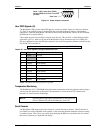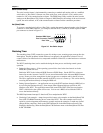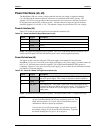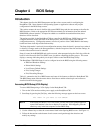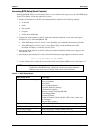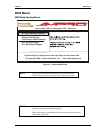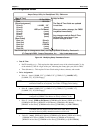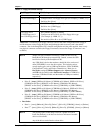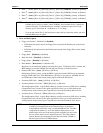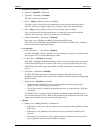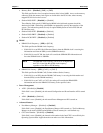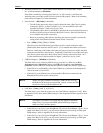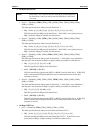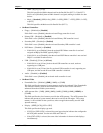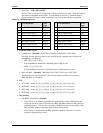
Chapter 4 BIOS Setup
ReadyBoard 700 Reference Manual 59
Table 4-2. Floppy Drive BIOS Settings
# of Floppy Drive(s) BIOS Settings
None
• Set Drives A and B to [None]
(1) Non-USB Floppy*
• Configure Drive A to floppy drive type (For example, [1.44MB, 3.5”] )
• Set Drive B to [None]
(1) USB Floppy
• Set USB Boot Support to [Enable]
• Set Drive A to [USB Floppy]
• Set Drive B to [None]
(2) Floppy drives
(1 USB Floppy and 1
non-USB Floppy drive*)
• Set USB Boot Support to [Enable]
• Configure one drive (Drive A or B) to floppy drive type
(For example, [1.44MB, 3.5”] )
• Set one drive (Drive B or A) to [USB Floppy]
Table Note: *A standard 34-pin floppy cable has a twist in the cable wiring between the Floppy A
and B connectors, where Floppy B has the straight through cable (non-twist) and is the middle
connector. Due to the ReadyBoard 700’s internal configuration and the cable supplied, there is only
one physical connector available (the Floppy B connector, because the Floppy A connector is not
available).
NOTE Ampro does not recommend connecting a USB boot device to the
ReadyBoard 700 through an external hub. Instead, connect the USB
boot device directly to the ReadyBoard 700.
Any USB (block) device that emulates a hard disk drive can be used
when [USB HDD] is set as the drive option. This includes various
storage media types, such as USB hard disk drives, USB CD-ROMs,
CompactFlash cards, and Flash or Thumb drives. Refer also to
Boot Order settings, USB Boot Support under Advanced features,
and USB (device enable) under On-Board Controllers for USB Drive
boot order, USB Boot Enable, and the number of USB ports enabled,
respectively.
♦ Drive E – [none], [HDD on Pri Master], [CDROM on Pri Master], [HDD on Pri Slave],
[CDROM on Pri Slave], [HDD/CF on Sec Master], [CDROM on Sec Master],
[HDD/CF on Sec Slave], [CDROM on Sec Slave], [USB HDD], or [USB CDROM]
♦ Drive F – [none], [HDD on Pri Master], [CDROM on Pri Master], [HDD on Pri Slave],
[CDROM on Pri Slave], [HDD/CF on Sec Master], [CDROM on Sec Master],
[HDD/CF on Sec Slave], [CDROM on Sec Slave], [USB HDD], or [USB CDROM]
♦ Drive G – [none], [HDD on Pri Master], [CDROM on Pri Master], [HDD on Pri Slave],
[CDROM on Pri Slave], [HDD/CF on Sec Master], [CDROM on Sec Master],
[HDD/CF on Sec Slave], [CDROM on Sec Slave], [USB HDD], or [USB CDROM]
• Boot Order
♦ Boot 1
st
– [none], [Drive A], [Drive B], [Drive C], [Drive D], [CDROM], [Alarm], or [Reboot]
♦ Boot 2
nd
– [none], [Drive A], [Drive B], [Drive C], [Drive D], [CDROM], [Alarm], or [Reboot]
NOTE The [Alarm] option sounds beeps on the PC speaker and can be
listed, like [Reboot], as the last boot device to indicate no bootable
device was not found.
Any of the drives can be listed as a boot drive.



